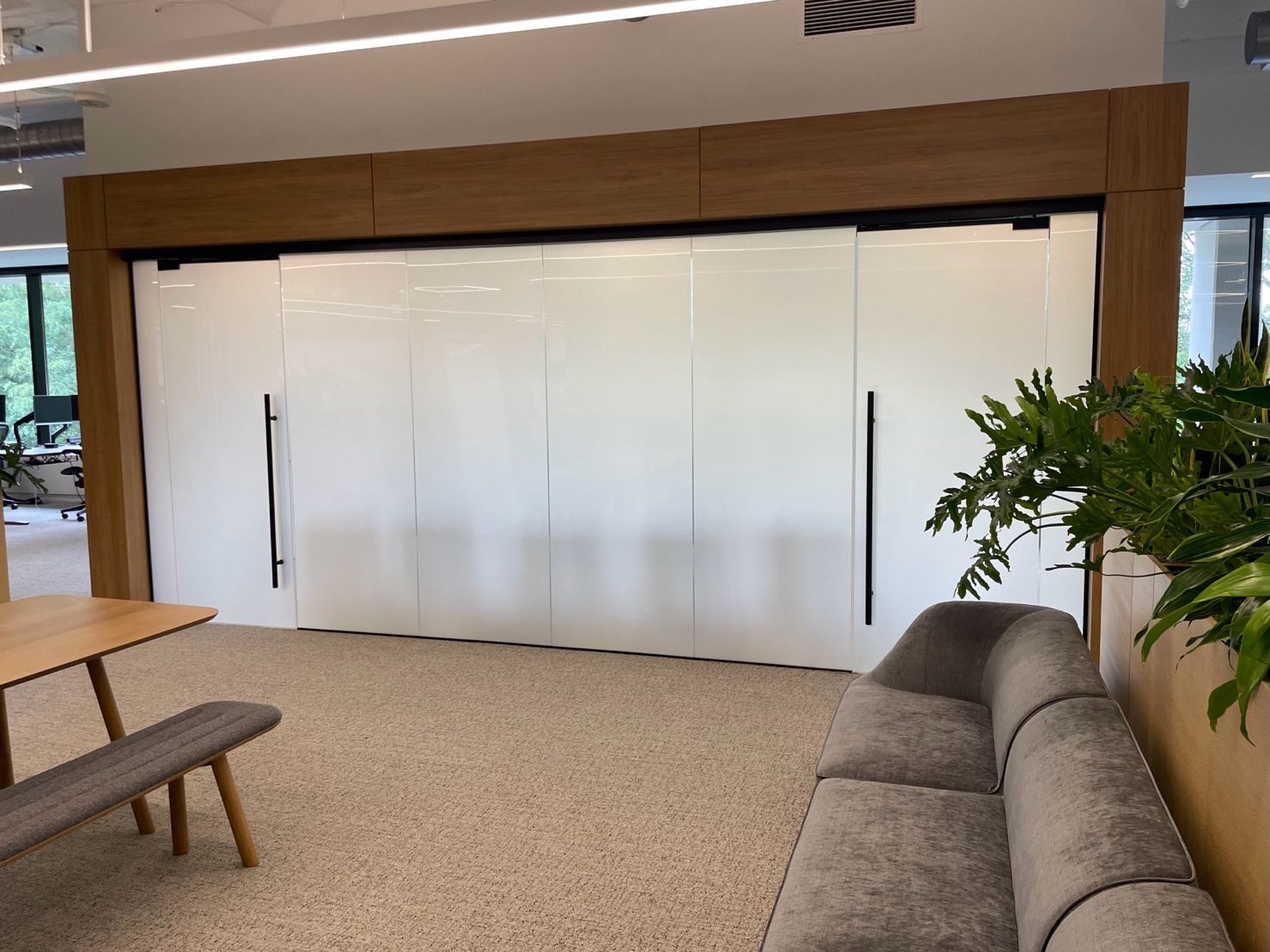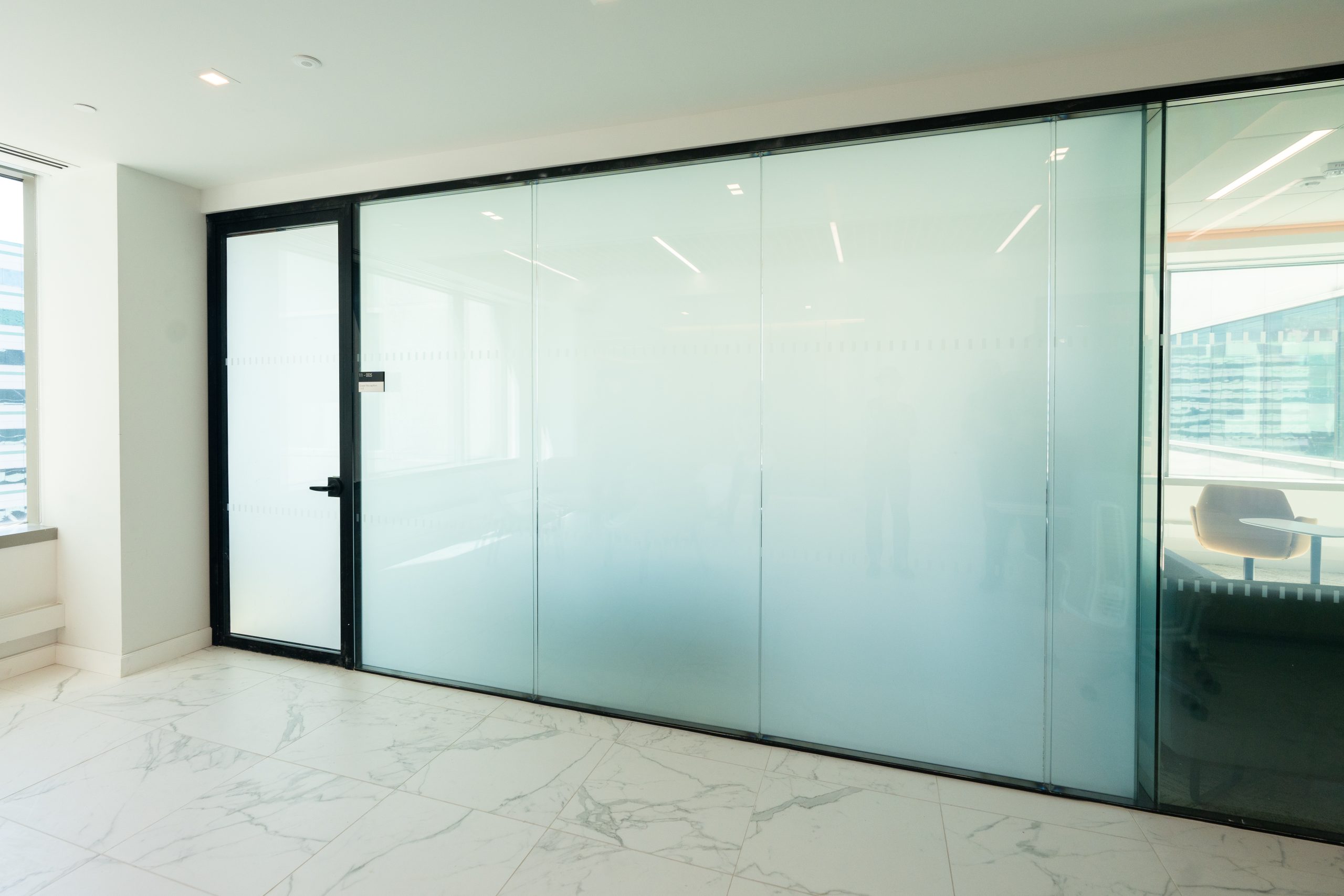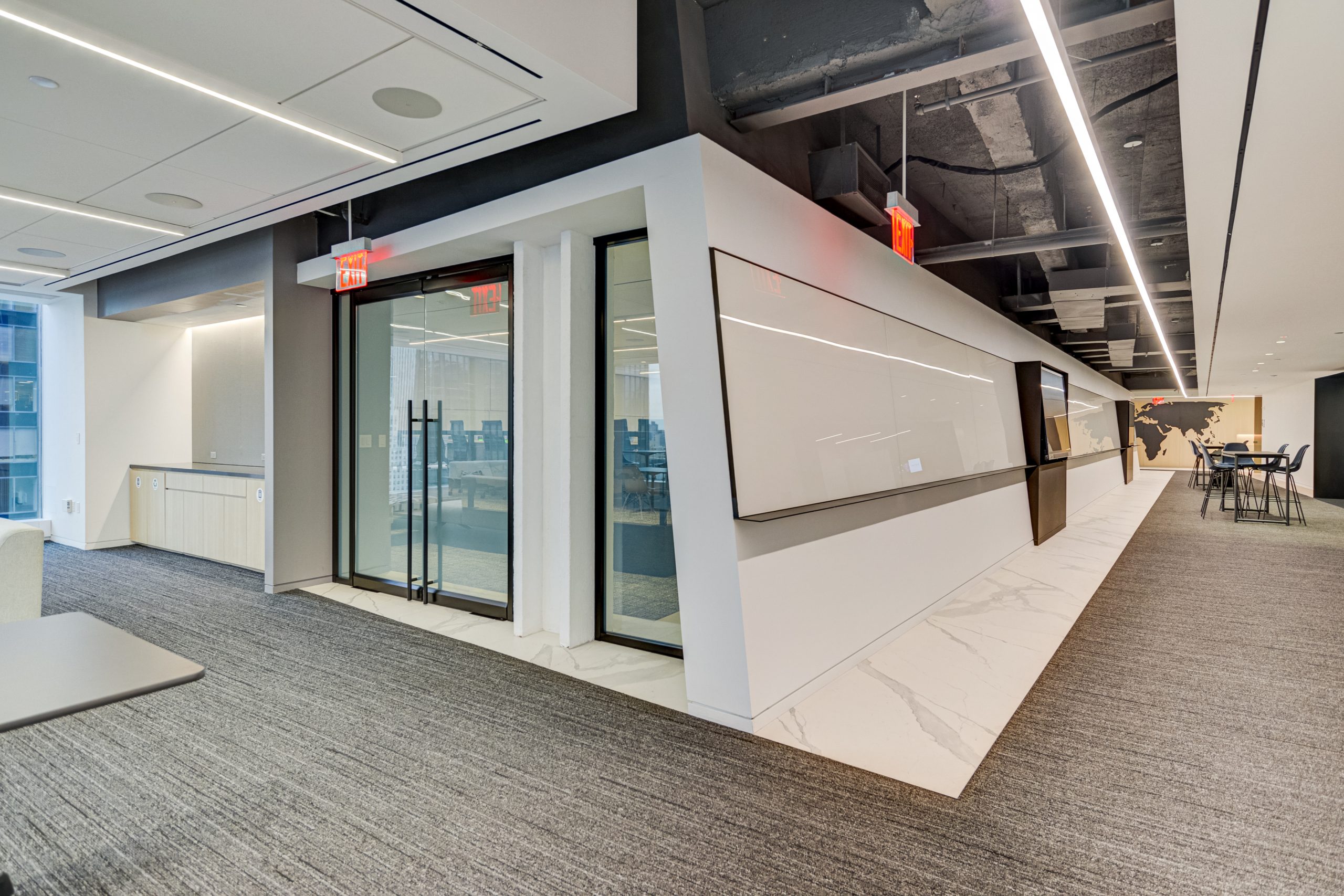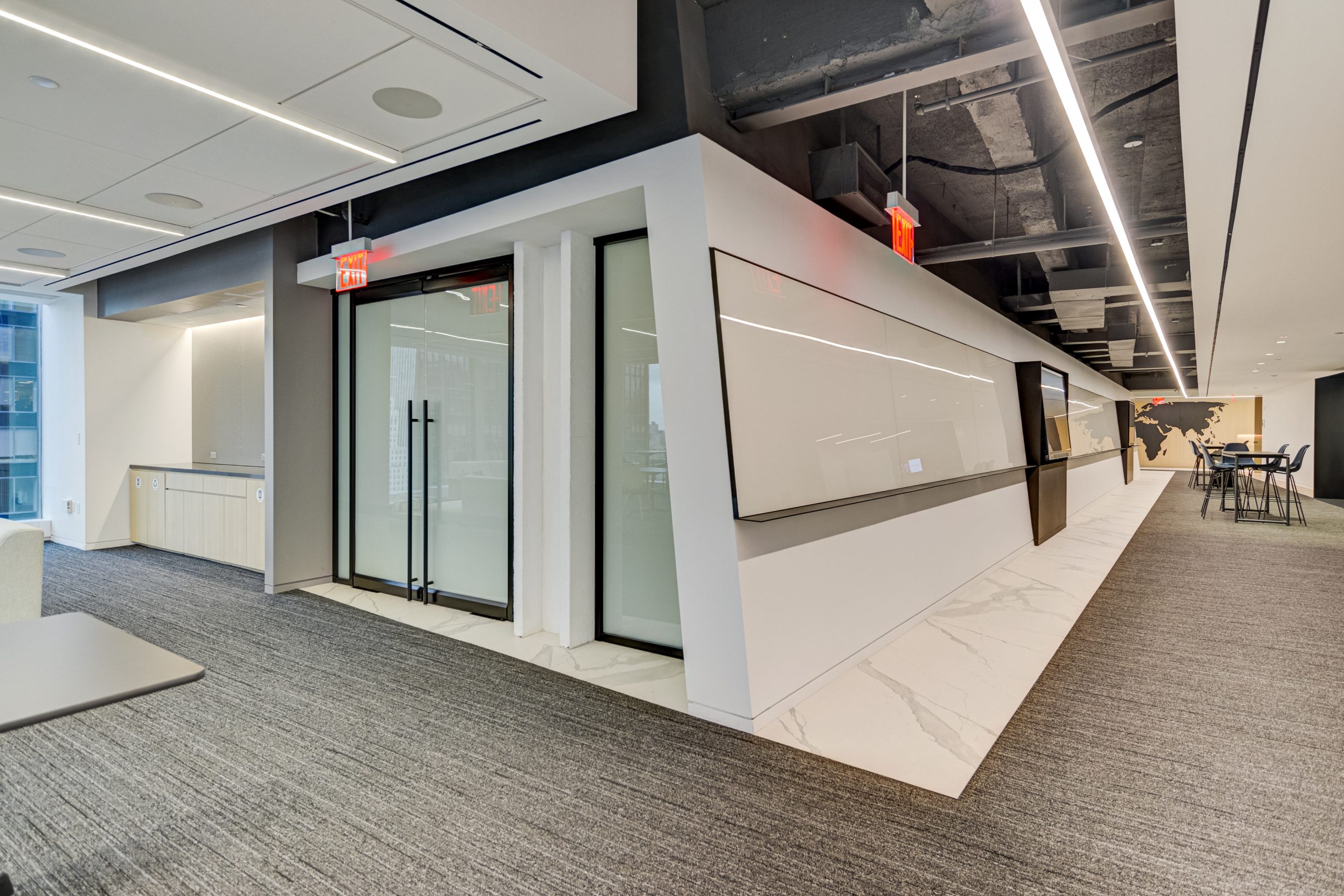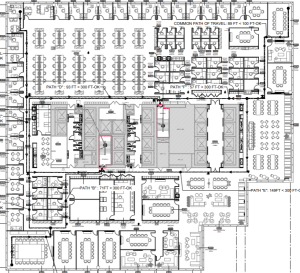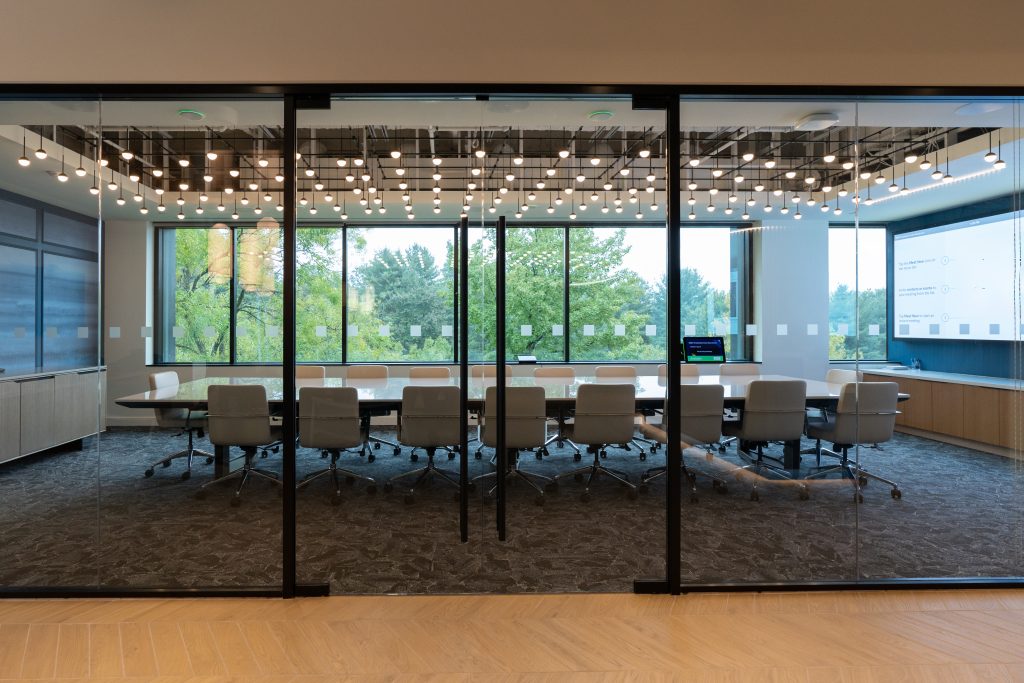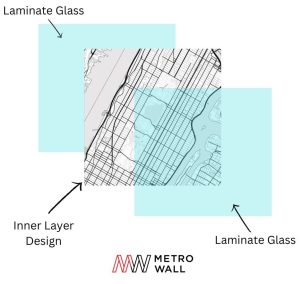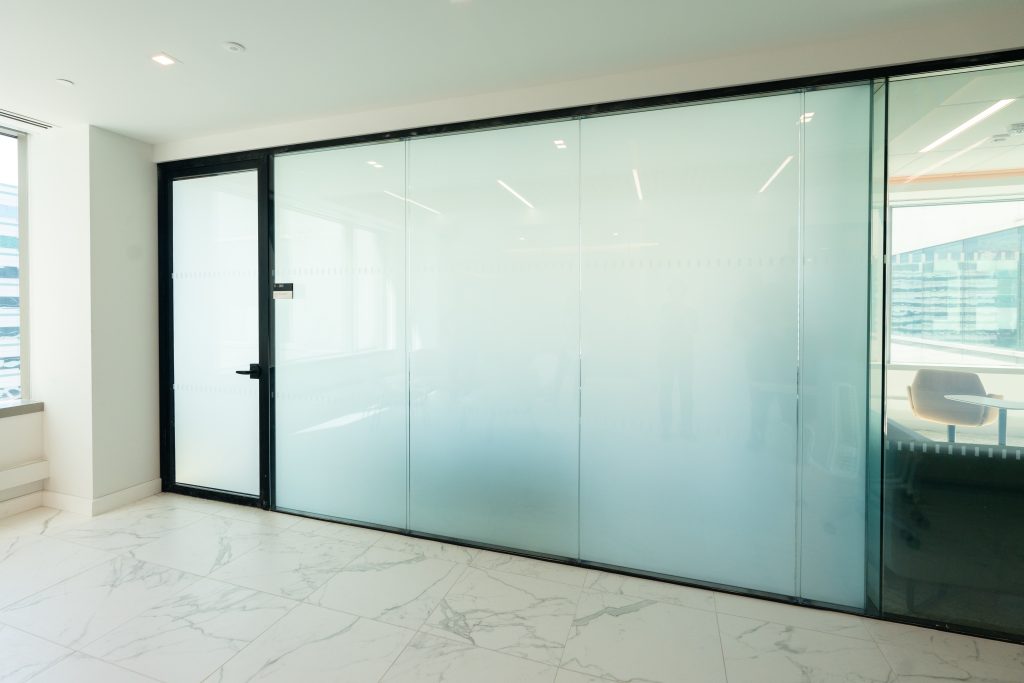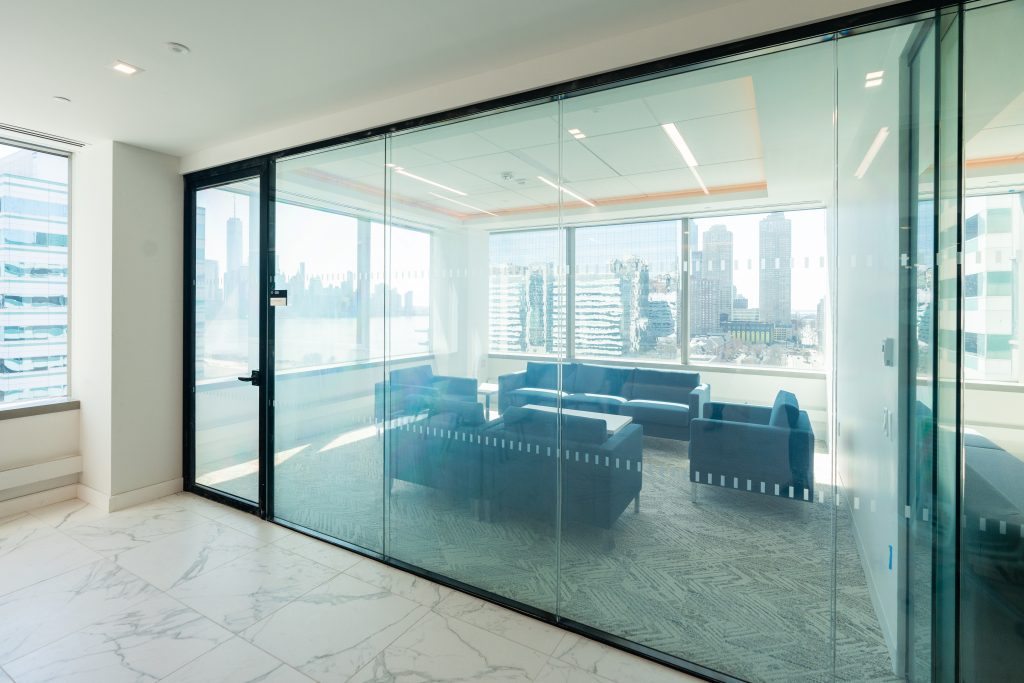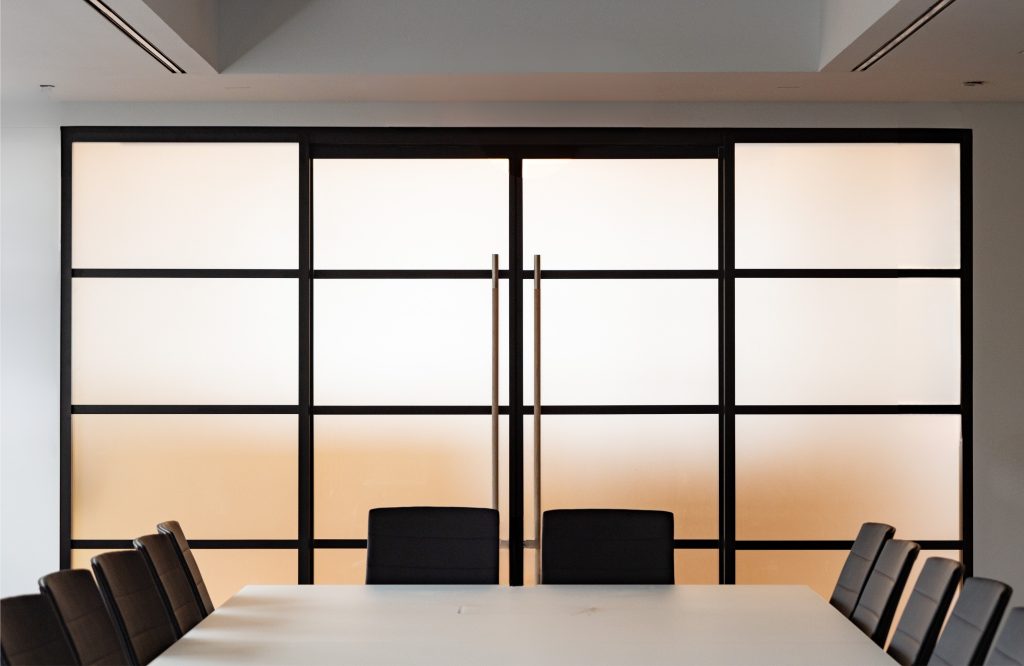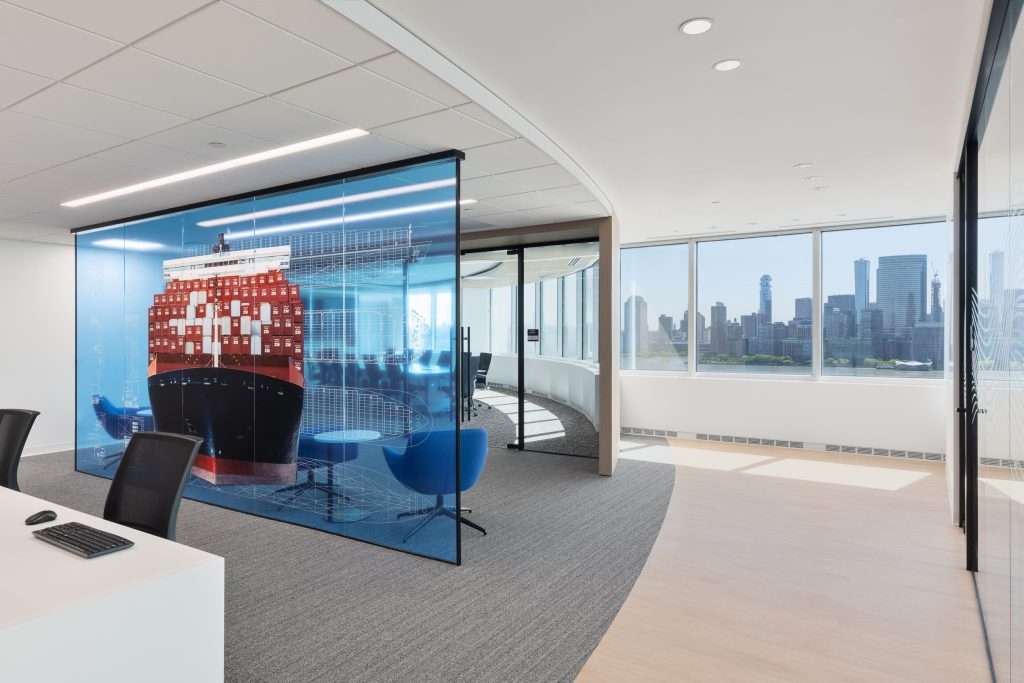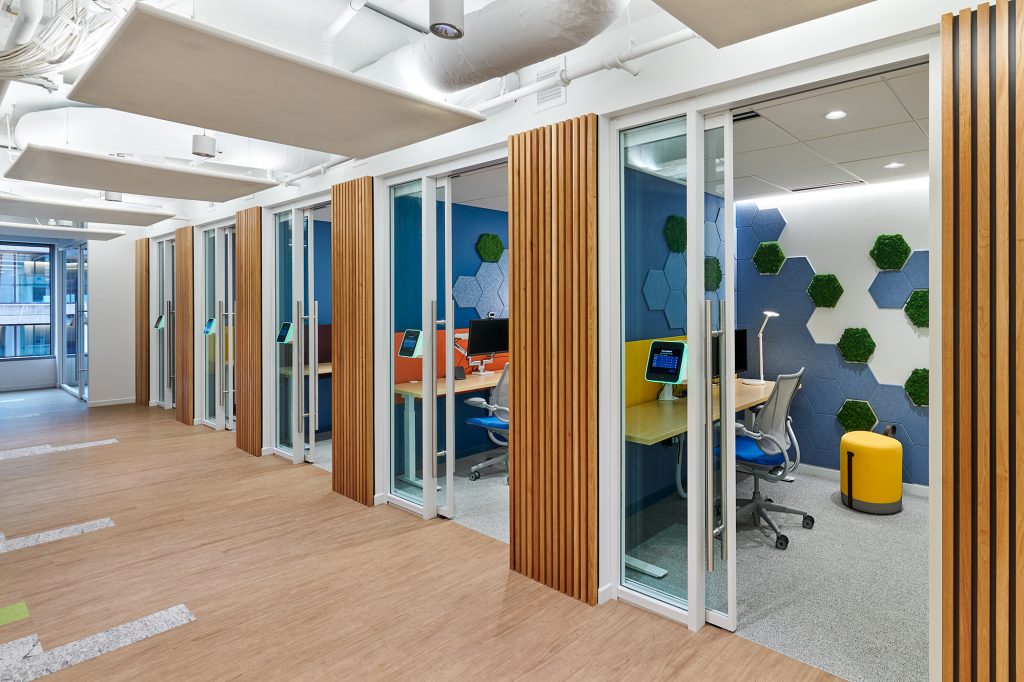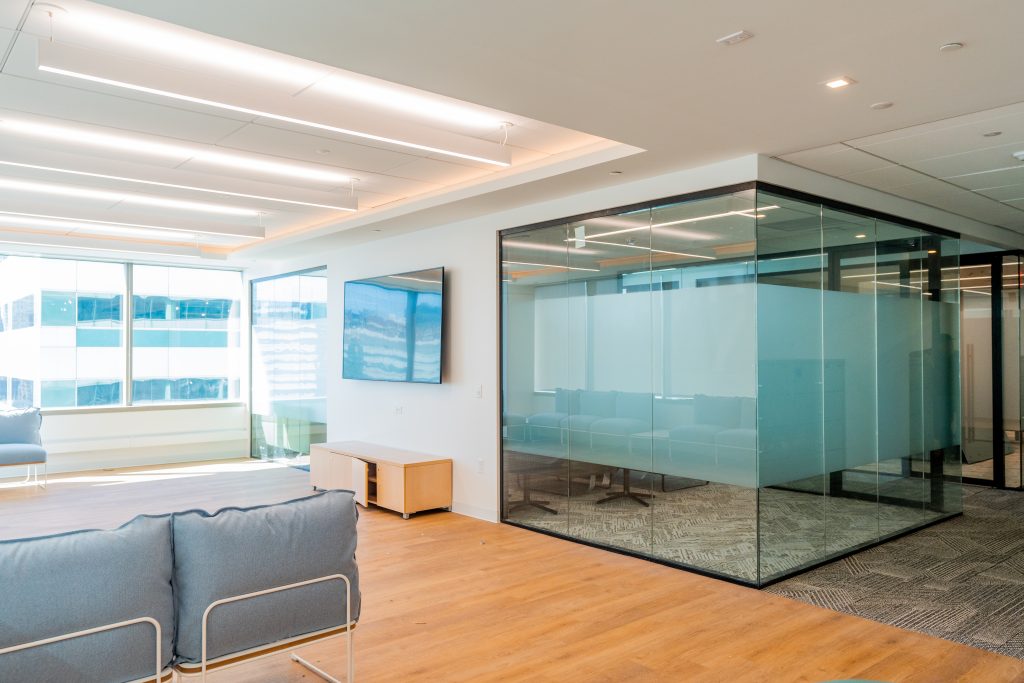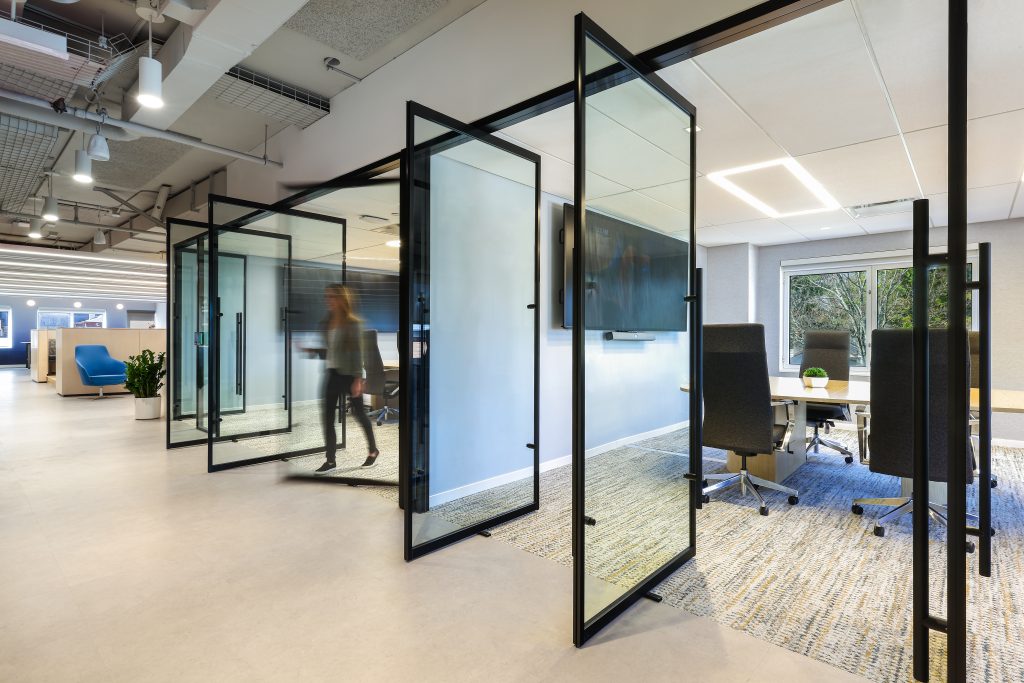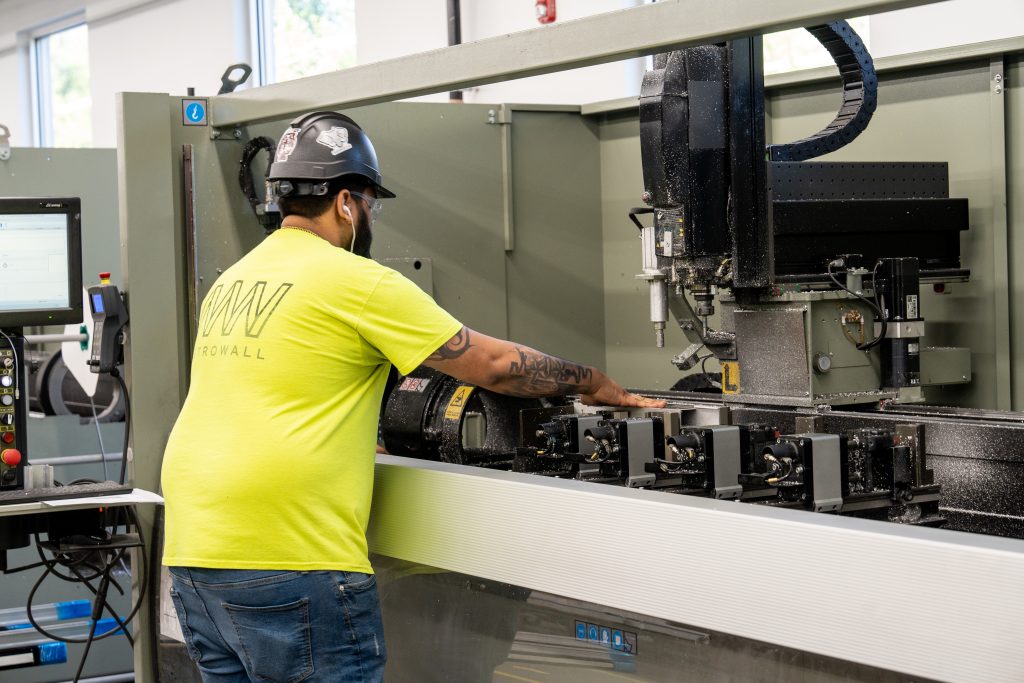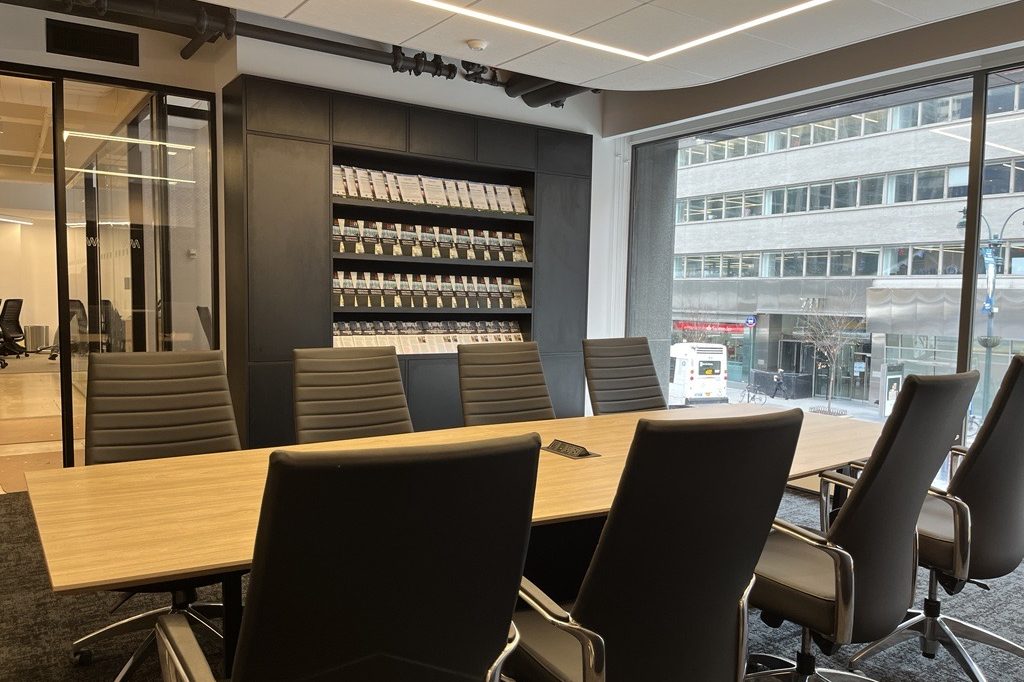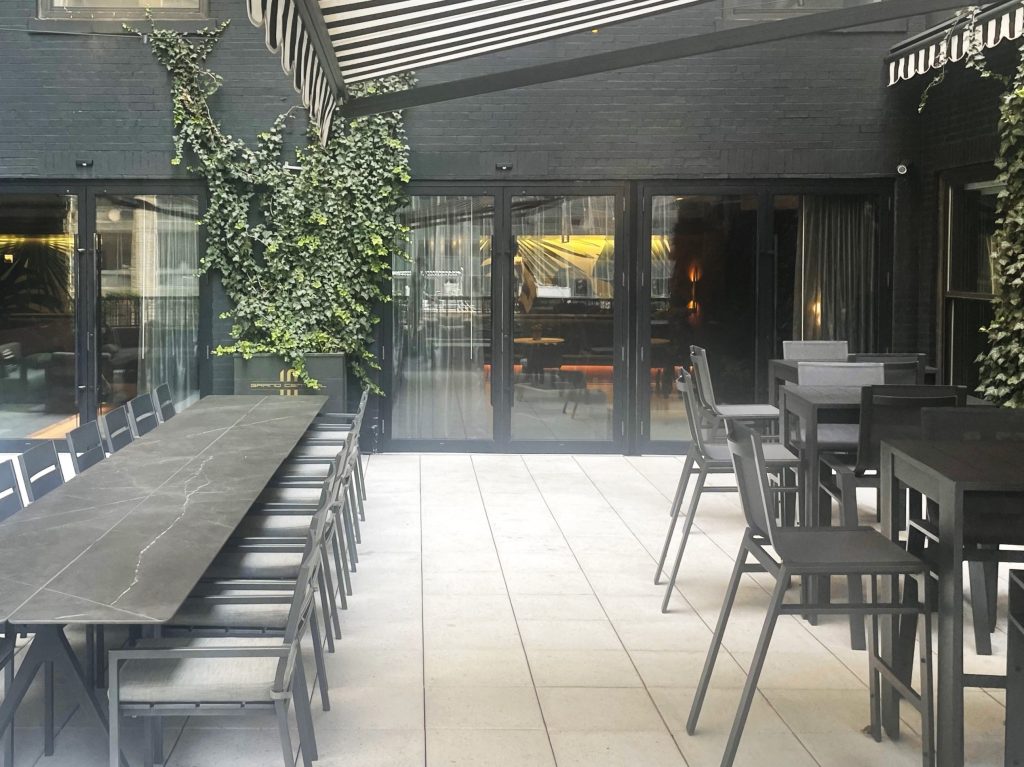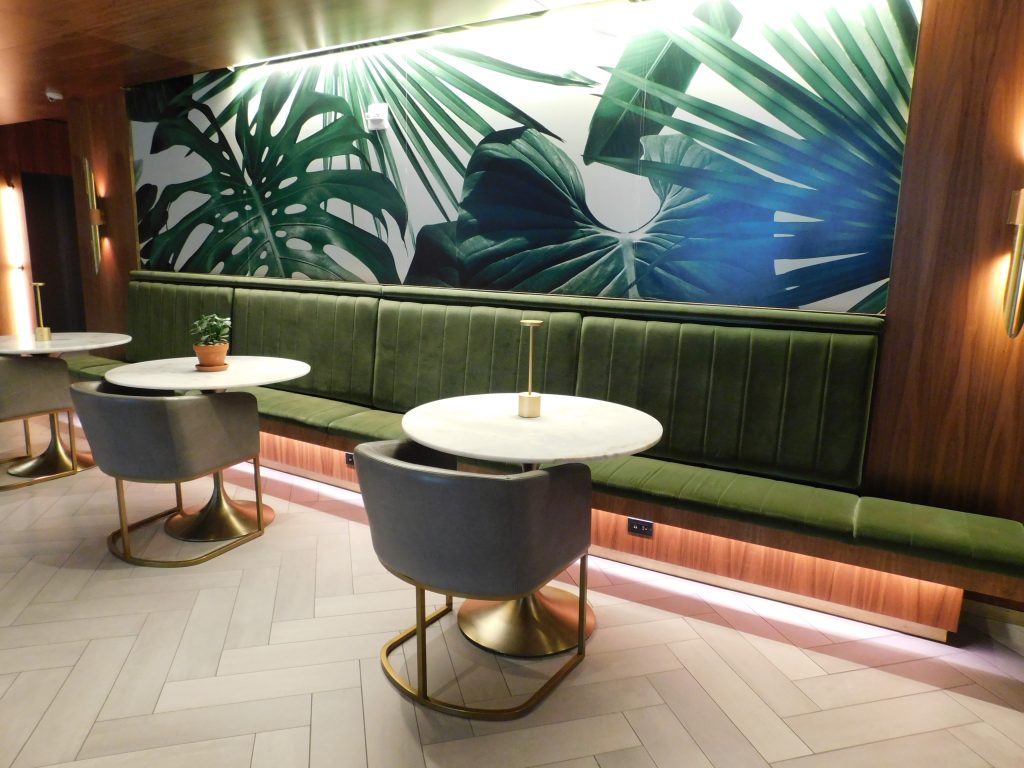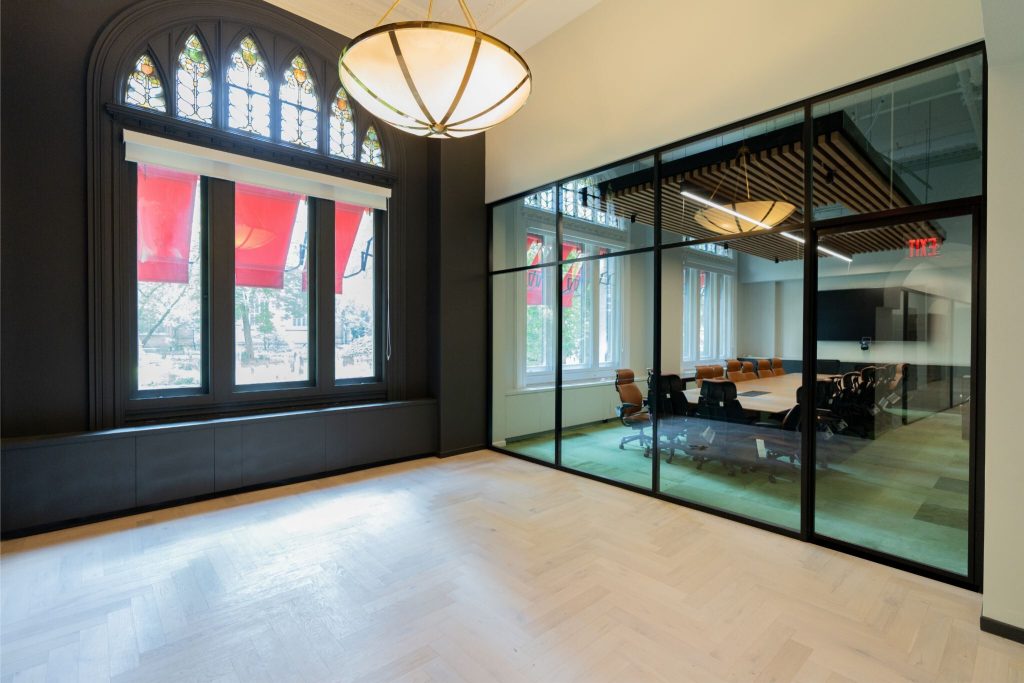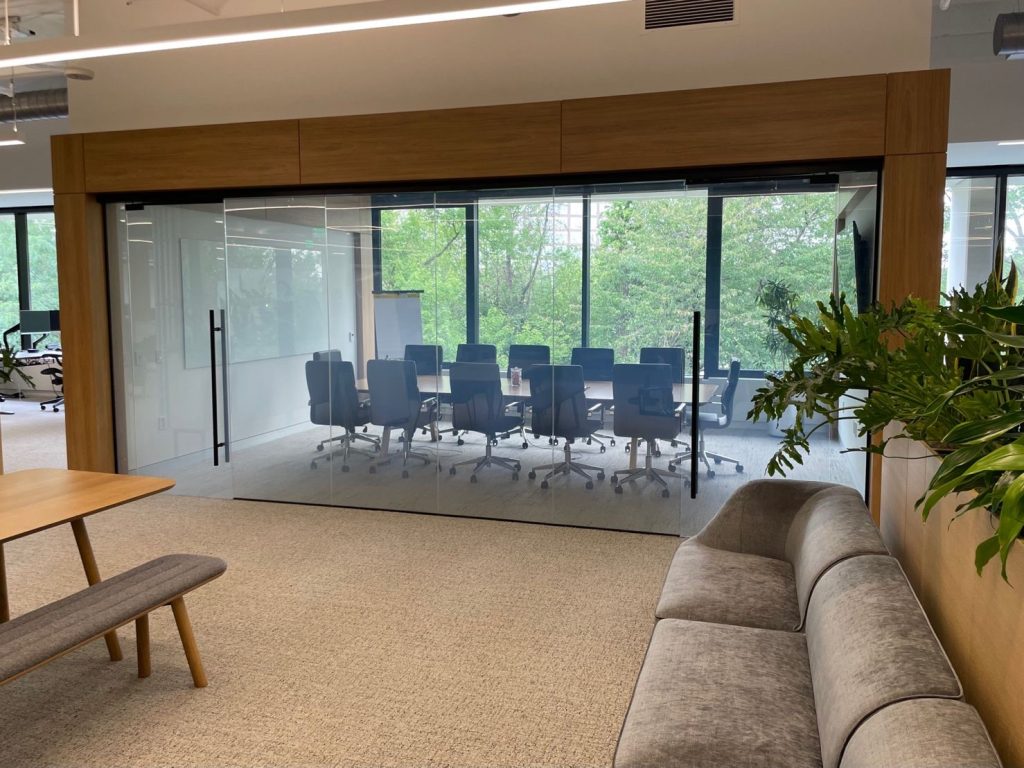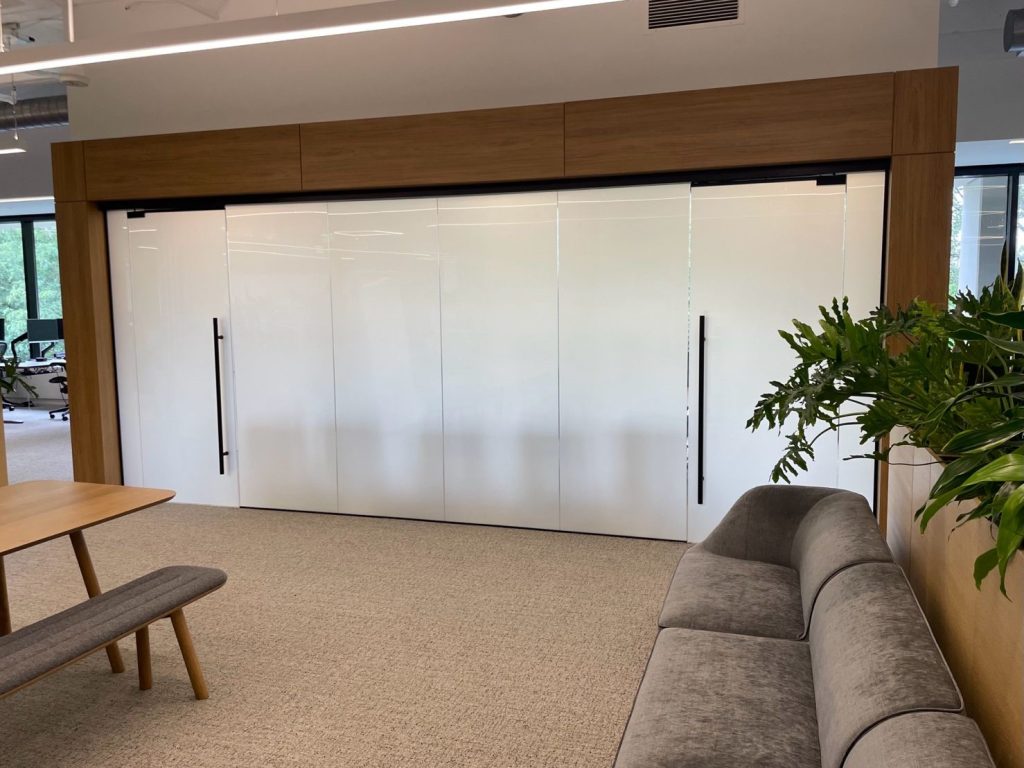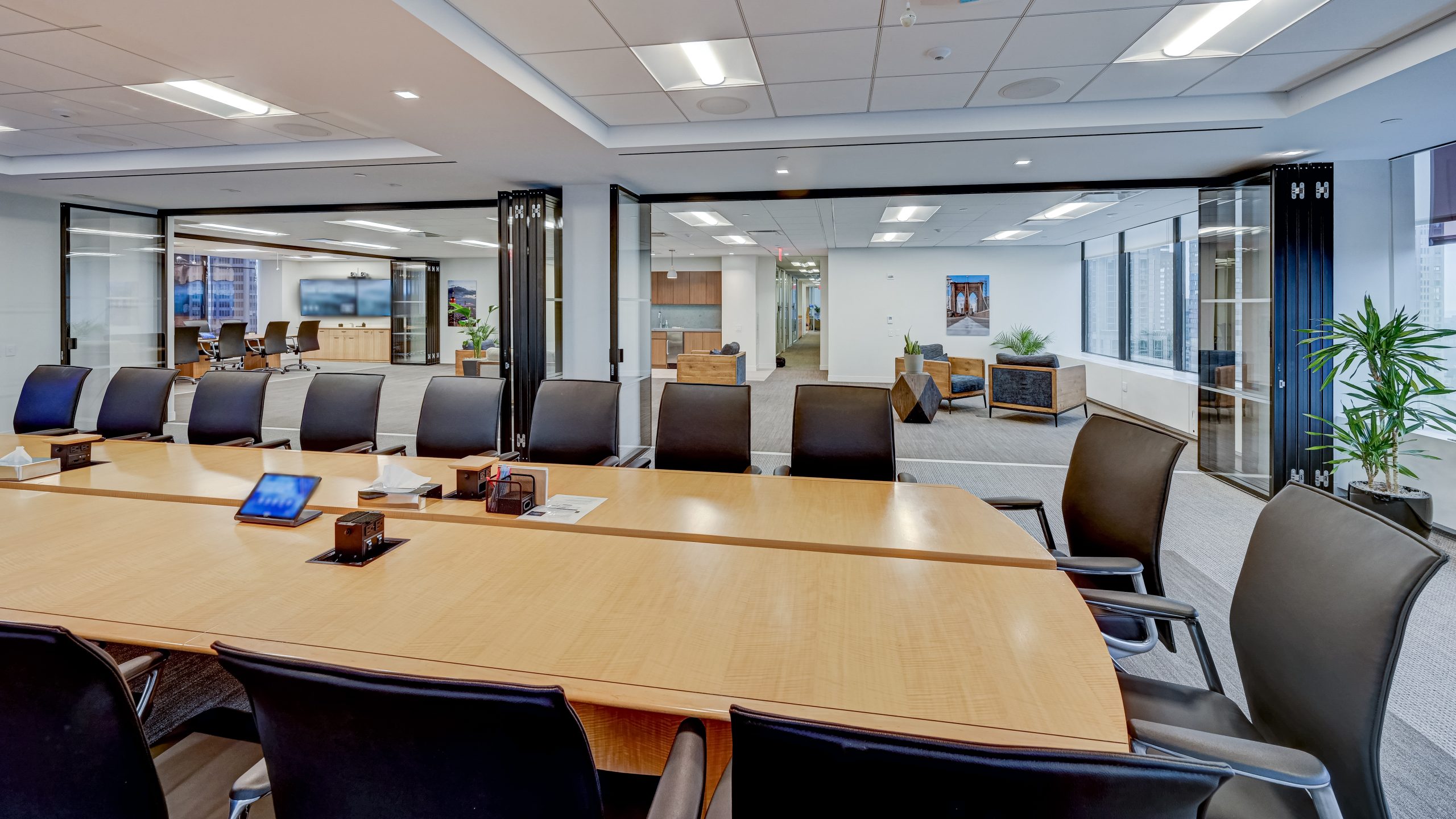In today’s commercial environments, achieving optimal acoustic performance is paramount. This is where the Sound Transmission Class (STC) rating becomes your indispensable ally. However, it’s not always clear what these ratings really mean and how that relates to glass walls. So, we decided to put together a blog post that breaks this down.
What is STC and Why Does It Matter?
The Sound Transmission Class (STC) is a numerical rating that quantifies how effectively a building element or assembly, like a glass wall system, attenuates airborne sound. In other words, it tells you how much sound a wall, floor, ceiling, door, or window will block from getting through to the other side. This rating is derived from laboratory tests, typically adhering to ASTM E90 and E413 standards, measuring sound reduction across various frequencies relevant to human speech (125 Hz to 4000 Hz).
In commercial settings, noise pollution directly impacts focus, privacy, and overall comfort. Imagine a bustling open-plan office where every phone call is overheard, or a confidential meeting where discussions spill into the corridor. Without adequate sound insulation, productivity plummets, and sensitive information is at risk.
A higher STC rating signifies superior sound isolation, leading to:
- Enhanced Speech Privacy: Crucial for executive offices, meeting rooms, and healthcare facilities.
- Reduced Distractions: Fosters concentration in open workspaces and quiet zones.
- Improved User Comfort: Creates a more pleasant and less fatiguing environment for occupants.
- Compliance with Building Codes: Many local building codes mandate minimum STC ratings for various applications. To find these codes, visit The International Building Code’s website. Each state also has websites for building regulations.
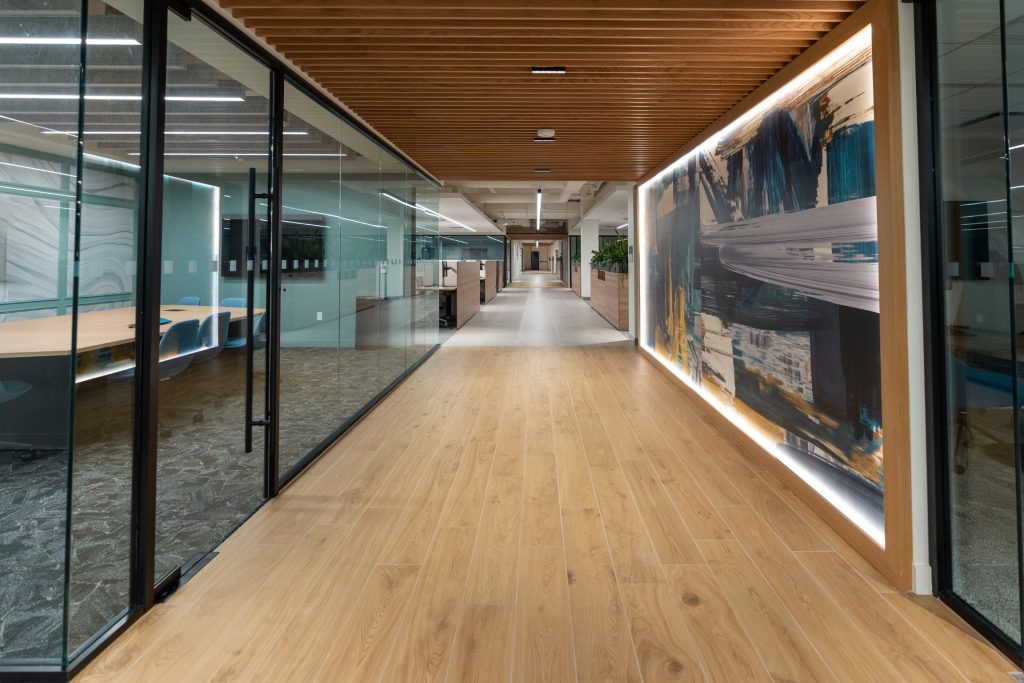
Practical Differences in STC Ratings
While a higher STC number always indicates better performance, understanding the practical implications of different ratings is key for effective design. Here’s what various STC levels mean in real-world commercial scenarios:
- STC 25-34: This range offers minimal sound reduction. Normal speech can be easily understood through the barrier. Think of a standard single-pane glass window or a thin interior door in a residential setting.
- STC 35-39: At this level, loud speech is audible but generally unintelligible. Normal conversations are muffled but still perceptible. For offices, this offers some basic separation but is inadequate for private discussions. Both the LP and VETRO Series are in this STC range.
- STC 40-44: This is where true privacy begins to emerge. Loud speech becomes a faint murmur, and normal speech is largely inaudible. You’d likely hear general office hum, but individual conversations would be difficult to decipher.
- STC 45-49: Achieving an STC in this range provides very good soundproofing. Loud speech is not audible, and even loud sounds like music or machinery are only faintly heard. This level is excellent for executive offices, private meeting rooms, and spaces requiring high confidentiality. Our EXTEND Series is in this range at a 48 STC rating.
- STC 50+: At this level, spaces approach true soundproofing. Very loud sounds are reduced to background noise, and most sounds are virtually inaudible. This is the realm of recording studios, specialized medical facilities, or high-security meeting rooms where absolute privacy is paramount. Our ENDURE, HUSH, and DG Series all offer STC ratings in this range.
It’s important to remember that a change of 1-2 STC points is almost imperceptible to the human ear. A 3-point difference is just perceptible, while a 5-point difference is clearly noticeable. A 10-point increase effectively halves the perceived loudness of a sound.
Boosting Sound Privacy in Commercial Settings
While high-performing wall systems form the backbone of a design, they’re not the only elements that can impact sound privacy. Here are the three ways to decrease sound transmission in a space.
Sound Masking Systems: These systems allow occupants to create background sound that’s engineered to match speech. In doing so, you can mask speech and make distant conversations fade into the background. Having a system like this is helpful in open-plan offices. Not only does this enhance sound privacy, but it also reduces distractions for those who are trying to work.
Acoustic Ceiling Treatments: Ceilings often act as a significant pathway for sound transmission and reverberation. Hard, flat ceiling surfaces allow sound waves to bounce freely, causing echoes and reducing speech intelligibility. Installing acoustic ceiling tiles, baffles, or clouds made from sound-absorbing materials (e.g., wood) significantly reduces reverberation time and absorbs airborne noise. This creates a quieter, more comfortable environment and prevents sound from flanking over partitions.

Proper Door and Gasket Specification: Even the highest-rated wall assembly will fail if the doors within it are acoustically weak. Specify solid core doors with high STC ratings (often laminated or specially constructed for acoustics). Crucially, ensure doors are fitted with continuous acoustic gasketing around the perimeter and an automatic door bottom. These elements seal the gaps that typically allow significant sound leakage, ensuring the door’s acoustic performance matches the wall’s.
By understanding the practical implications of STC ratings and strategically integrating high-performance glass wall systems like MetroWall’s with complementary acoustic solutions, architects and designers can craft commercial spaces that not only look exceptional but also deliver exceptional sound privacy and productivity. Invest in acoustic performance to deliver lasting value to your clients.
If you need a copy of our glass wall systems’ STC rating, download our brochure. Or head to the Products section of our website.




